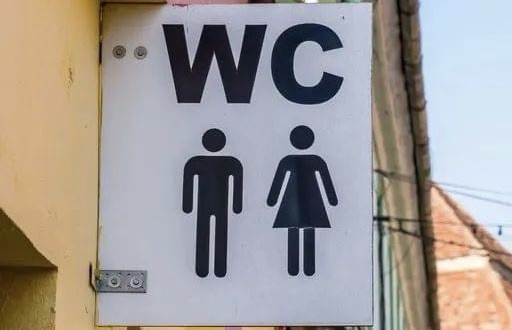When traveling around the world, you’ve probably noticed the ‘WC’ sign outside bathrooms in various places—cafes in Paris, train stations in Berlin, or parks in Tokyo.
But have you ever wondered what ‘WC’ actually stands for and why it’s used instead of other terms like ‘Toilet’ or ‘Restroom’? Let’s uncover the origins and cultural significance of this familiar symbol.
The abbreviation ‘WC’ stands for Water Closet. This term originated in Europe in the late 19th century and referred to a small room with a toilet connected to a water system. Back then, it was a revolutionary concept, as it replaced traditional outhouses or privies that lacked indoor plumbing.
Interestingly, the word closet here doesn’t mean a wardrobe or storage space but refers to an enclosed room. As indoor plumbing became more common, ‘Water Closet’ was used to describe these new sanitary facilities. Over time, the abbreviation ‘WC’ became a convenient shorthand that stuck, especially in Europe.
In the 19th century, advancements in plumbing led to the invention of the water closet, which was a major improvement in sanitation. The term quickly gained popularity as cities adopted indoor plumbing to improve public health.

In the UK, WC remained a widely used term for much of the 20th century, even as other words like ‘toilet’ and ‘bathroom’ began to take over. By then, WC had already become a universal symbol on restroom doors, spreading beyond Europe to other parts of the world.
Cultural Variations: WC vs. Toilet vs. Restroom
The term ‘WC’ is still common in Europe, where it’s instantly understood as a sign for a bathroom or toilet. In the United States, however, it’s rarely used. Instead, terms like ‘Restroom’ or ‘Bathroom’ are more common, with ‘Restroom’ often preferred in public places for its polite and indirect tone.
In Asia, bathroom signs often use images or characters indicating gender, with terms like Toilet or Washroom used depending on the region. These differences highlight the cultural nuances in how people refer to such everyday facilities.
Despite changing language trends, ‘WC’ continues to be widely recognized. Its simplicity and universality make it an ideal choice for international spaces like airports and tourist areas. Even though regional terms vary, ‘WC’ remains a practical and effective way to indicate restroom facilities.


